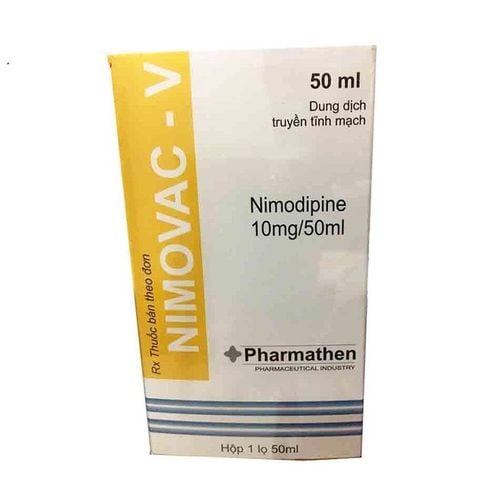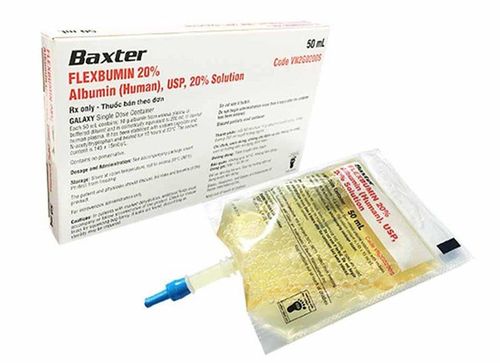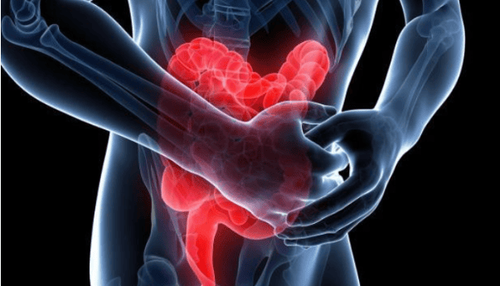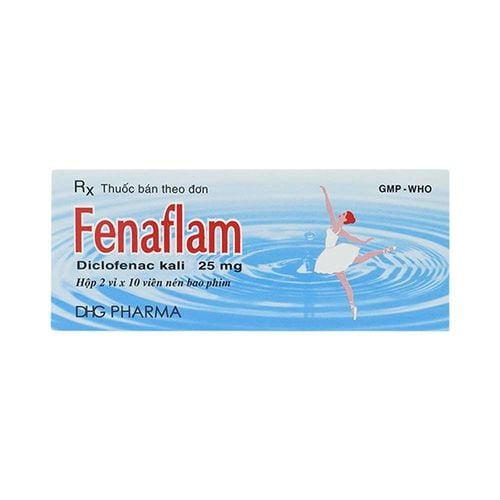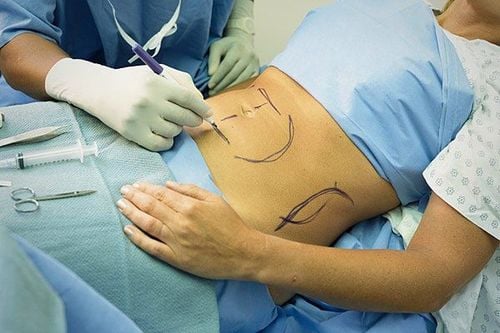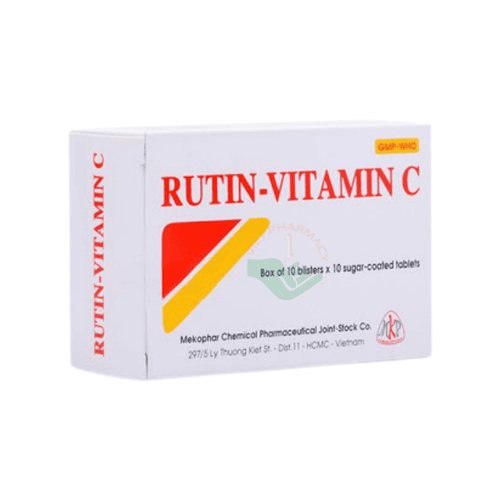This is an automatically translated article.
The article was professionally consulted by MSc Vu Van Quan - Department of General Surgery & Anesthesia - Vinmec Hai Phong International General Hospital.There are many forms of gastrectomy with different purposes, including the treatment of peptic ulcer disease. The doctor will perform a typical partial laparoscopic gastrectomy, removing the bottom 2/3 of the stomach and removing the pylorus.
1. What is peptic ulcer disease?
Peptic ulcer disease is a disease that causes inflammatory lesions and ulcers on the lining of the stomach or duodenum (the first part of the small intestine). These injuries occur when the lining (the innermost lining) of the stomach or duodenum is worn away and the layers below the stomach or intestinal wall are exposed. Duodenal ulcers accounted for 95%, gastric ulcers accounted for 60%, of which ulcers in the small curvature of the stomach accounted for 25% of cases.
The two main causes of peptic ulcers are Helicobacter pylori (HP) infection or the use of nonsteroidal anti-inflammatory drugs (NSAIDs) commonly used to treat joint pain.
Helicobacter pylori (HP) infection This is one of the main agents that directly affect peptic ulcer disease. After entering the body, the bacteria will get into the mucous layer that protects the stomach and duodenum mucosa and secrete toxins that lose the function of the mucosa against acid.
Regular use of drugs with analgesic and anti-inflammatory effects. It is the second most common cause after Helicobacter pylori infection. Long-term use of anti-inflammatory and analgesic drugs in the elderly, inhibiting the synthesis of prostaglandins, which are substances that have a protective effect on the gastric mucosa, are reduced, causing peptic ulcers.
In addition, regularly smoking and drinking alcohol (or other alcoholic beverages), nervous tension (stress), eating habits, irregular activities, ... are also factors. Favorable factors lead to peptic ulcer disease.
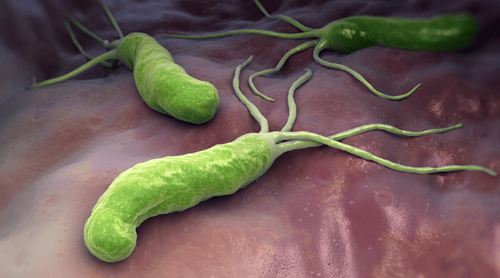
2. When is laparoscopic gastrectomy needed to treat stomach ulcers?
Surgical treatment of peptic ulcer disease includes absolute indications for surgery and relative indications for surgery depending on the severity of the disease. Gastric bypass surgery offers both curative benefits and some potential risks. Therefore, the doctor must always carefully weigh the pros and cons to make the final decision. In general, surgery should be indicated if:
Peptic ulcer, oral medications are no longer effective (duration of medical treatment has been long, at least 2 years or more). Peptic ulcer disease complications: perforation, pyloric stenosis, gastrointestinal bleeding failure of medical treatment or recurrent gastrointestinal bleeding, cancer, etc. In addition to the above-mentioned manifestations, the teacher The drug also needs to be based on the characteristics related to the patient to indicate surgery, such as:
About age: Limit surgery to patients who are too young or too old. Health status: carefully calculated with cases of exhaustion, with chronic diseases such as cirrhosis, tuberculosis, diabetes, chronic kidney disease, bronchial asthma,.... Patient's wishes: based on occupation and family background. However, it is important to understand that the points raised in this section are only a basis for consideration and calculation in the decision-making process. For each specific case, the indication for surgery is always to ensure the best choice for the patient, not necessarily applying any rigid criteria.

3. How is laparoscopic gastrectomy for peptic ulcer disease performed?
In laparoscopic or classical gastrectomy, the mass that needs to be removed is usually 2/3 of the stomach to remove the lesion and remove the acid-producing area of the stomach.
Specifically, the small curvature must be removed at least 10cm and the large curvature is at least 20cm. This cut has a straight direction, goes down and from right to left so that the food flows in the right direction and there is no stagnant phenomenon.
After removing the stomach, the doctor will perform a healing suture of the digestive tract. Based on the site of ulcer resection and specific gastroduodenal condition, there are several suture methods as follows:
Gastric to duodenal anastomosis. Connect the stomach to the jejunum.
4. Complications can be encountered during laparoscopic gastrectomy
Surgical interventions always come with the risk of complications during surgery, after surgery or late sequelae. Some possible risks and basic management are:
Injury to blood vessels during surgery: stop bleeding. Injury to the colon: treatment according to the lesion. Pneumonia: antibiotic treatment, systemic and respiratory care. Respiratory failure: respiratory support and intubation. Define the reason. Acute bleeding syndrome: resuscitate and determine the cause of the bleeding if it is severe and continues, requiring silent surgery to solve the cause. Infective syndrome due to anastomosis or duodenal fistula: Determine the cause, anti-infective antibiotics, surgically treat the rupture complication or apply a drainage procedure. Early postoperative intestinal obstruction: Insert nasogastric tube to aspirate fluid, monitor and resuscitate the patient comprehensively, determine the cause and treat conservatively or intervene; Auxiliary loop syndrome and Dumping syndrome: Severe cases require surgery to re-connect the gastrointestinal tract. In addition, if gastrectomy is not enough, or if the gastric mucosa is left behind or the stomach stagnates, it will lead to recurrent ulcers. This case accounts for about 2-5% of surgeries and requires another surgery to re-gat the stomach or cut the trunk of 2 X nerves.
5. Advantages of endoscopic gastrectomy at Vinmec Hai Phong
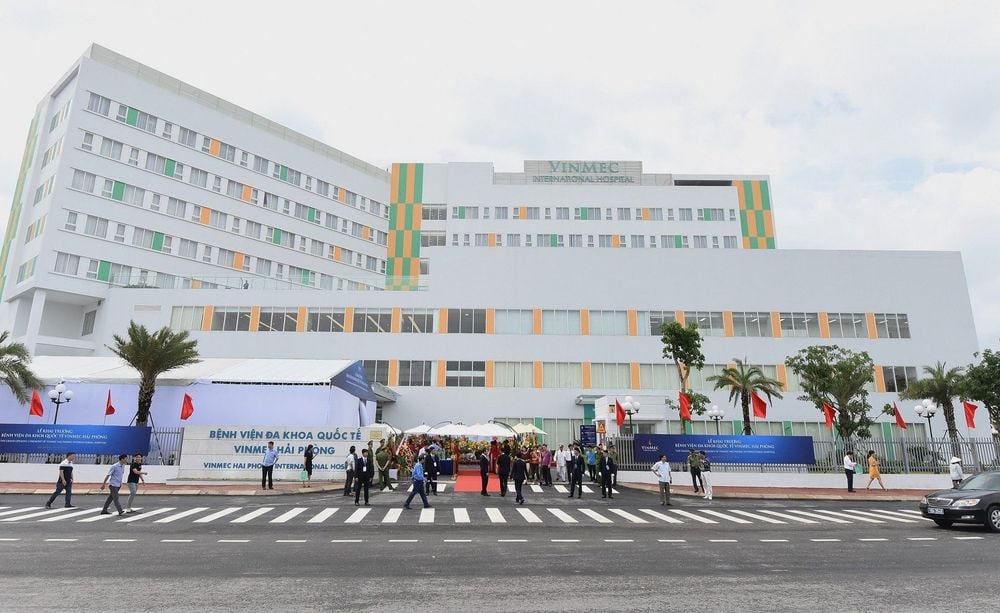
Since July 2019, the Department of Gastroenterology - Vinmec Hai Phong International General Hospital has implemented the technique of laparoscopic gastrectomy combined with lymph node dissection for patients with peptic ulcer disease. Medical treatment with drugs for a long time but no cure.
The outstanding advantages of laparoscopic gastrectomy when performed at Vinmec Hai Phong are:
Equipment of optimal quality helps to increase the accuracy of the technique. Restore gastric function - colon quickly. Small surgical scars, minimizing the risk of wound infection and ensuring aesthetics. Postoperatively, there is less pain, short hospital stay (average 5 days) and early return to normal activities. With the Karl Storz GmbH full HD laparoscopic gastrectomy system and the Ligasure REFVLF 10GEN scalping system that meets the most advanced medical equipment standards today, it helps to bring the success rate of surgery to almost absolute, up to to more than 95%.
Besides, in terms of personnel, this surgery at Vinmec Hai Phong is conducted by Master, Doctor Vu Van Quan. Dr. Quan is well-trained in laparoscopic surgery, especially laparoscopic gastrectomy and has more than 10 years of experience in digestive surgery.
Patients who have surgery at the Department of Surgery, Vinmec Hai Phong Hospital enjoy outstanding benefits including:
Short hospital stay, minimizing the cost of stay, reducing the risk of hospital infections. With cases of lithotripsy, inguinal hernia, customers can always go to work after 1 day of discharge from the hospital. Limit the use of antibiotics, reduce the risk of side effects, save costs, patients do not have to worry, fear when administering antibiotics and follow up after taking the drug. Recovery rate reached 90%, re-hospitalization 0%, postoperative infection 0%. The Early Post-Surgery Care Program provides comprehensive care to patients before, during and after surgery, helping to reduce hospital stay, improve treatment quality and reduce costs; reduce the rate of complications. ERAS has been shown to shorten the average length of stay from 8-10 days to 3-4 days. Insurance: Vinmec signed with many large private insurance partners. When customers are hospitalized, they are guaranteed and compensated at the hospital. Save a lot of customer's time and effort. Other advantages : Modern equipment; Service quality according to international standards; Highly qualified doctor; Patients do not need relatives to take care of them because they are cared for by a dedicated and attentive nursing doctor...
Please dial HOTLINE for more information or register for an appointment HERE. Download MyVinmec app to make appointments faster and to manage your bookings easily.





